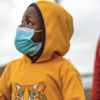The low quality of South African schooling has been widely confirmed through international tests of mathematics and literacy. The 2016 Progress in International Reading Literacy Study (PIRLS) results indicate that 78% of grade 4 children cannot read for meaning. In this context, it is useful to ask whether there are exceptions to the norm: are there schools serving the poor that produce at least adequate levels of learning? This brief describes the findings of a rigorous search process to identify high-performing primary schools accessible to the poor, with a specific focus on three provinces: Gauteng, KwaZulu-Natal and Limpopo. While we failed to find high-quality no-fee schools, variation in learner performance exists among no-fee schools suggesting that improved levels of learning quality are attainable.
DOWNLOAD PDFPopular Posts
Other Readings
- Repetition and dropout in South Africa before, during and after COVID-19 January 15, 2024
- COVID-19 and inequality in reading outcomes in South Africa: PIRLS 2016 and 2021 December 23, 2023
- What rich new education data can tell us December 22, 2023
- Early Grade Repetition in South Africa: Implications for Reading November 15, 2023
- The Impact of Agricultural Minimum Wages on Worker Flows in South Africa November 14, 2023
Related Posts
EducationHistorical Resources

Public Expenditure on Education in South Africa, 1987/8 to 1991/2: An Analysis of the Data
Ryno PageJuly 5, 2024
EducationHistorical Resources

National Education Policy Investigation: Education Planning, Systems, and Structure
Ryno PageJuly 5, 2024
EducationHealthNews and OpinionResearch Outputs

Assessment matters: What can we understand about the National Senior Certificate results during COVID-19 from university entrance exams?
Ryno PageMay 25, 2024





